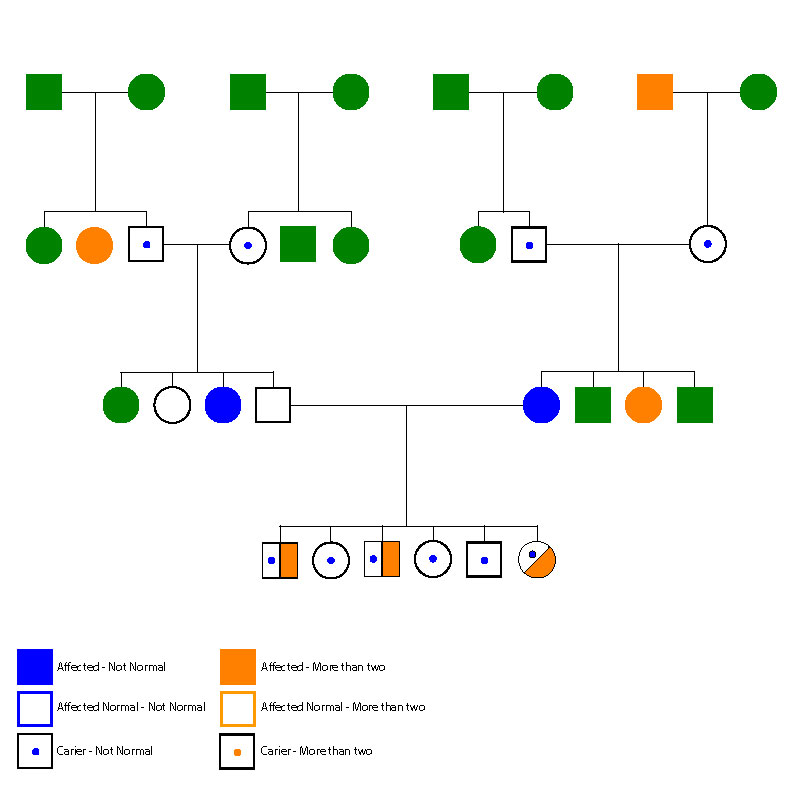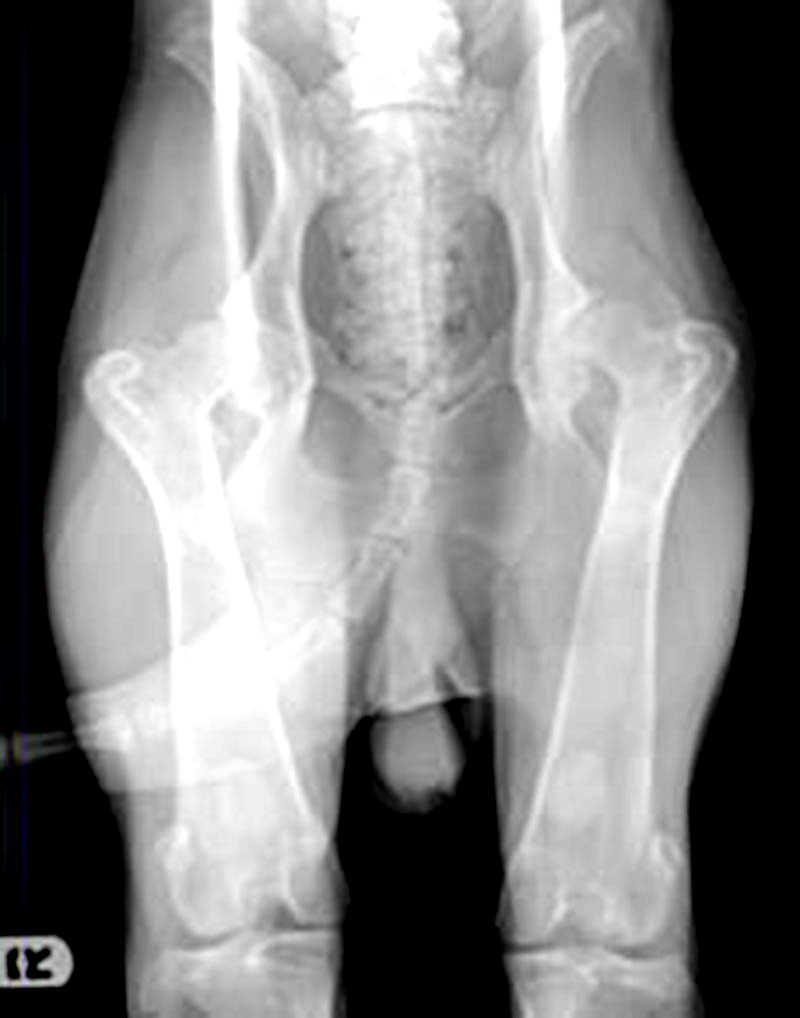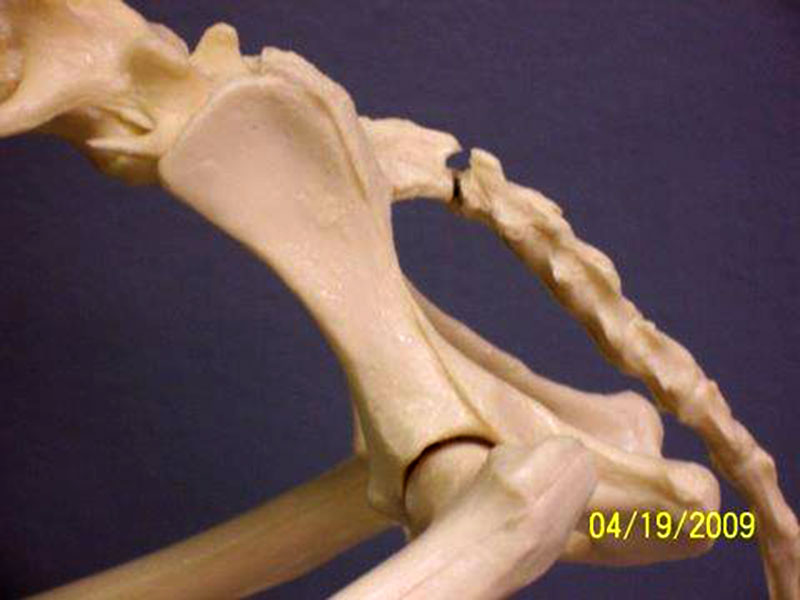Parent Category:
(Hip Dysplasia)
Introduction
Genetic disorders occur in humans and canines throughout the world and contrary to popular belief, no breed has been spared from problems. There is little doubt that health issues are among the top concerns of all owners and breeders. But not all heatlh problems are not the same; some are worse than others. At the top of the list are those called the dreaded diseases. These are the disorders that can cripple, kill,cause early death or blindness. Mixed breed and designer dogs also have health problems. Data reported by Dr. Jarolim (2009) at the Cummings School of Veterinary Medicine shows that mixed breeds are more commonly affected by diabetes then purebred dogs. What keeps the public from realizing this is the lack of a reporting mechanism.
Strategies for Managing Disease
There are many approaches to managing disease and their related problems. Sometimes the recommendation is to not repeat the breeding or to simply eliminate all the relatives of the affected animals. Both recommendations are extreme, and in the long term, are usually not in the best interests of the breed. On the other hand, there are no recommendations that fit every breeding situation. The key is to learn how to manage the spread of a problem and over time reduce and eliminate it. The goal of every breeder is to preserve blood lines while maintaining genetic diversity while reducing risk. The good news is that today there are more than 60 genetic diseases which can be used to identify the normals, affected and carriers. For these disorders, breeding stock should be screened for specific disorders before breeding. There are other inherited disorders for which there are no genetic tests. In these cases, screening breeding stock to avoid disorders is more difficult because more information is needed about the ancestors. With modern technology and research, better strategies are available to address prevention, control and elimination of diseases with or without genetic tests.
Diseases with no Genetic Tests
There are many diseases for which there are no genetic tests. This makes breeding decisions more difficult. What complicates matters is that in every breed there are quality dogs that are carriers and many of the disorders have a late onset. This means most carriers will not be known until they produce the disorder. In situations like this where there are not tests, two terms are used in developing a solution. They are called phenotype and genotype. Phenotype refers to the characteristics that can be seen, meaning their external appearance. Hence, a dog that is observed to be black or to have hip dysplasia (phenotype) may or may not produce dysplastic or black puppies. Such a dog could have a genetic make-up (genotype) that includes the genes for good hips and other colors. Since genotypes cannot be seen directly, indirect methods must be used to learn about them. Indirect methods are not estimates or guessing games. They include radiographs, physical examinations or other protocols that are used to study the ancestors and their littermates, usually for three generations. Those who do not collect information usually rely on "type" breeding which means they select sires and dams based on their appearance or winning record rather than on the traits observed in their offspring or the relationship that exists between ancestors. Many times "type" breeding simply means breeding the winners to the winners. In practice, these breeding’s fail to take advantage of what the science of genetics has taught us about inheritance. Studying a pedigree for its genotypes means focusing on the occurrence of traits found among the ancestors and their littermates. While this approach requires more time, it is far superior to learning the names and titles of ancestors (Traditional Pedigree) which is not heritable information.
Figure 1. Traditional Pedigree

When a dog produces a disease and is retired from breeding and replaced with quality offspring the carrier risk is reduced by half (50%). This strategy places emphasis on the replacement of carriers with normal-testing offspring that equal or exceed them in quality. This approach is called breed, screen and replace. It is a strategy which over time will reduce and diminish a problem. The best pedigree for this purpose is called the Symbols pedigree which is discussed below. Without data and information about the relatives and the occurrence or prevalence of a disorder, problems cannot be reduced.
Diseases with Genetic Tests
There are more than 60 genetic tests available for testing inherited diseases. They can be found at AKC/CHF.org which offers a search function for diseases by breed. Testing breeding stock before the fact tells the breeder whether the animal is normal, a carrier or affected. In most cases breeders will breed a normal tested animal to normal testing animals with the goal of producing normal offspring that will not carry the disease. There are times when an exceptional animal of quality will be tested and found to be a carrier or affected. In these cases the recommendation is to breed the carriers if they are of exceptional quality as long as they are bred to normal testing partners. This decision should be based on the quality of the carrier for other needed traits that cannot be found in other normal testing animals. In breedings that involve one tested carrier or affected animal and one normal, the offspring should be tested and if there is an exceptional pup that tests normal, it should replace the parent. This approach is called breed, test and replace. As a strategy this approach manages and controls risk while reducing the extent of the problem. Over time it will reduce, diminish and eliminate the problem.
Symbols Pedigree (Breadth and Depth)
A question that continues to linger in the mind of every breeder focuses on the need to know about the genes inside their dogs and those carried by their ancestors. Since no single method can look directly into all the genotypes, breeders must rely on their ability to collect quality information. Pedigree analysis is an important tool for any effort that attempts to reduce the risk of a disease or eliminate it. Breeders interested in health, temperament or a special trait need information about the normals, carriers and affected animals. Knowing where and how often they occur in a pedigree increases the probability that the carriers and affected animals can be controlled or eliminated.
The best pedigree for this purpose is called the Symbols Pedigree. It relies on vertical and horizontal information about the ancestors. It is easy to use the two symbols. Squares are used to represent the males and circles to represent the females. This pedigree places emphasis on the breadth of a pedigree, meaning the littermates of each ancestor. It relies on the logic that a pedigree can be understood by learning about the traits and characteristics observed among the littermates of each ancestor. This approach provides horizontal and vertical information and is effective for making improvements in the core elements of health, performance, temperament and other specific traits of interest. The inclusion of littermates distinguishes this pedigree from all others.
Figure 2 Symbols Pedigree

Information is coded using designated colors that represent specific traits or diseases. Because breeders are interested in many traits and diseases, several colors are used to code their pedigrees. The repetition of a color signals that a genetic trend or pattern may be present. In this example (Figure 2) green indicates that no information has been collected. Blue and orange are used to code specific traits. A dot of any color indicates a carrier for a trait. In Figure 2, the coding shows 10 carriers (dot) among 31 ancestors. In a real case this would be a concern to a breeder.
Simple and Complex Diseases
Genetic health problems can be divided into two categories. They are called simple or complex. The more troublesome disorders are usually complex (polygenic) meaning they are caused by more than one pair of genes. For complex diseases, a number of liability genes combine to cross a threshold for the disease. Unfortunately, most polygenic disorders do not have a genetic test for carriers, but they do have phenotypic tests that can identify affected individuals. The strategy for controlling these inherited problems involves three steps : 1) Identify traits that more closely represent the genes being selected against, 2.) Standardize nuisance factors (such as the environment) that can limit selective pressures against genes and, 3) Make selections based on the breadth and depth of a pedigree.
There are many polygenetic disorders found in mixed breed and purebred dogs.
Hip Dysplasia (HD)
This is a dreaded disease that is complex (polygenic). It involves a malformation and hip joint laxity which occurs in many small and large breeds and has a complex mode of Inheritance (polygenetic). One of the first steps used in controlling this disease is a radiograph at two years of age, submitted to the OFA prior to breeding. Another tool used in the control of HD, is Penn HIP, where compressed and distracted hip radiographs are compared, and a distraction index (DI) is formulated. This method quantifies the amount of laxity of the soft tissues of the hip joint. For complex or polygenetic disorders such as HD the preferred method of control when no genetic test available involves the use of breadth and depth of pedigree which means the study of the breeding partners, their littermates and those of their parents and grandparents for three generations. The risk for producing HD has been shown to depend on the frequency with which the disorder occurs among the littermates and close relatives.
Radiograph of young male dog

Skeletal view of hip socket

| Breed | Percentage % |
|---|---|
| Bulldog | 72.1 |
| Pug | 66 |
| Dogue De Bordeaux | 56.7 |
| Otterhound | 51.1 |
| Neapolitan Mastiff | 47.1 |
| St. Bernard | 46.8 |
| Clumber Spaniel | 44.8 |
| Black Russian Terrier | 43.4 |
| Sussex Spaniel | 41.5 |
| Cane Corso | 40 |
| Basset Hound | 37.4 |
| Boykin Spaniel | 33.7 |
| Perrod Epresa Canario | 33.3 |
| Norfoltk Terrier | 33.25 |
| American Bulldog | 33.2 |
| Glen Of Imaal Terrier | 31 |
| French Bulldog | 30.4 |
| Fila Brasileiro | 29.9 |
| American Staffordshier Terrier | 26 |
| Bloodhound | 25.7 |
A breeding tool that is useful for control can be seen in Table 2. The data illustrates the outcome of matings based on information extracted from the OFA. This table is based on 444,451 progeny where both parents had hip ratings. The data show that as the percentage of dysplastic progeny in a pedigree increases so is the likelihood that the sire’s and dam’s phenotype (hip rating) will decrease from excellent to dysplastic. OFA recommends the following based on data collected from thousands of breedings:
- Breed normal to normal
- Breed normal dogs that come from normal parents and grandparents. This is depth of pedigree
- Breed normal dogs that have more than 75% normal siblings. This is breadth of pedigree
- Select dogs that have a record of producing a higher than breed average percentage of normal progeny. This is where Breed surveys can be of value
- Choose replacement animals that exceed the breed average
Table 2 illustrates the outcome of matings based on information extracted from the OFA data base. A total of 444,451 progeny were identified where both parents had hip conformation ratings. The percentage of dysplastic progeny increased as the sire’s and dam’s phenotypic hip ratings decreased from excellent through dysplastic. Reed (2002) reported equal genetic contribution of progeny hip scores for the dire and dam.
| Excellent | Good | Fair | Dysplastic | |
|---|---|---|---|---|
| Excellent | T= 5,8325 N= 5,630 (96.5%) D=205(3.5%) |
T=16,315 N=15,481(94.9%) D=834(5.1%) |
T=1,931 N=1,782(92.3%) D=149(7.7% |
T=362 N=308(85.1%) D=54 (14.9%) |
| Good | T=17,281 N=16,291(94.3%) D=990(5.7%) |
T=69,041 N=63,346((91.8%) D=5,695(8.2%) |
T=12,008 N=10,566(88.0%) D=1,442(12.0%) |
T=1,826 N=1,525(83.5%) D=301(16.5%) |
| Fair | T=3,146 N=2,888(91.8%) D=258(8.2%) |
T=15,475 N=13,581(87.8%) D=1,894(12.2%) |
T=3,957 N=3,311(83.7%) D=646(16.3%) |
T=632 N=456(72.2%) D=176(27.8%) |
| Dysplastic | T=595 N=528(88.7%) D=67(11.3%) |
T=2,941 N=2,394(81.4%) D=547(18.6%) |
T=935 N=698(74.7%) D=237(25.3%) |
T=309 N=197(63.8%) D=112(36.2%) |
Role of Breed Clubs
Breed clubs can play an important role in the health of their breed. This can be accomplished by routinely performing health surveys (usually every 5 years) to monitor the changing health of their breed. Owners should be encouraged to take time to complete these surveys even if their animals are healthy. Surveys should include known disorders and dreaded diseases, age of onset, age of death, reproduction rates, need for caesarian sections, sex of offspring, litter size, number of stillborn offspring and growth rates problems. The CHIC program at the OFA can help because it is a good source for breed information. By working with parent clubs to identify health issues CHIC, is able to establish a central information system that supports breeders and research. Once in place, the CHIC program can offer benefits to breeders, buyers, parent clubs, and researchers. For the breeders, CHIC provides a reliable source of information regarding dogs. For the buyers, the CHIC program provides accurate information about the results of health testing.
Conclusion
Selective breeding contributes to making genetic improvements. This responsibility lies with the breeder. Achieving a health goal depends upon the quality of the information collected coupled with the ability and skill levels of the breeder. A key component contributing to success includes selection of the breeding animals and what is known about their siblings, parents and grandparents. Breed clubs that develop health surveys can help make notable improvements. In Part II I will discuss the breeding strategies for four other dreaded diseases (Legg-Perthes, Elbow Dysplasia, Patellar Luxation and Hypothyroidism.
References
- Keller, Greg, 2006. The use of health databases and selective breeding, Orthopedic Foundation for Animals, Inc., Columbia MO. Pg. 9-11.
- Bell, Jerold, Cavanagh, K, Tilley, L, Smith, F., 2012. Veterinary Medial Guide to Dog and Cat Breeds, Teton New Media, Jackson, WY.
- Bell, Jerold, 2012. What you need to know about producing genetically healthy puppies. BEC, Goodman Mo. Sept. 28, 2012.
About the Author
Carmen L Battaglia holds a Ph.D. and Masters Degree from Florida State University. As an AKC judge, researcher and writer, he has been a leader in promotion of breeding better dogs and has written many articles and several books.Dr. Battaglia is also a popular TV and radio talk show speaker. His seminars on breeding dogs, selecting sires and choosing puppies have been well received by the breed clubs all over the country.

